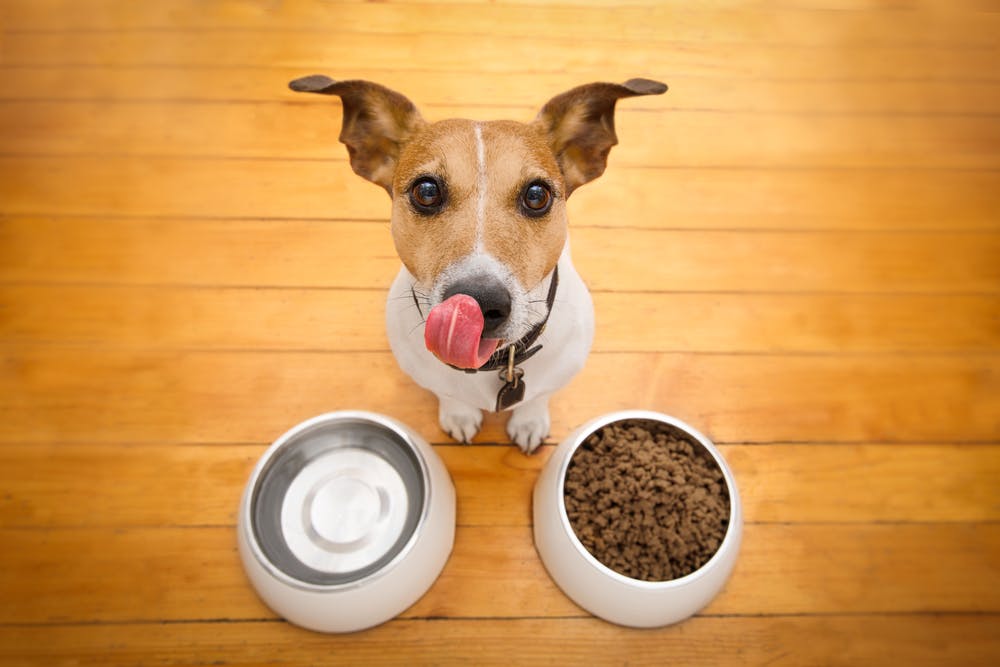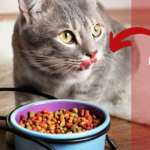
Today, I’d like to talk about how to switch dog food. If you’re a dog owner, you may have considered changing your dog’s food at some point for various reasons, such as better nutrition or a change in dietary needs.
However, it’s essential to do this gradually to avoid any potential negative impacts on your furry friend’s health. In this blog post, I’ll provide tips and guidelines to help you switch your dog’s food safely and effectively.
Assess Your Dog’s Current Diet
Before making any changes to your dog’s food, it’s important to assess their current diet. You’ll want to evaluate their current food and determine if it’s meeting their nutritional needs. Here are some steps to take:
Determine why you want to switch your dog’s food
Before making any changes, it’s essential to understand why you want to switch your dog’s food. Is your dog not getting the nutrients they need? Are they experiencing digestive issues or allergies? Understanding why you want to switch can help you choose the right food for your dog’s specific needs.
Evaluate your dog’s current diet
Take a closer look at the ingredients and nutritional content of your dog’s current food. Make sure it meets their nutritional needs and is appropriate for their age, breed, and activity level.
Watch for signs that your dog may need a new diet
If your dog is experiencing issues such as excessive shedding, lack of energy, or digestive problems, it may be time to switch their food. Be sure to consult with your veterinarian to rule out any underlying medical issues.
Consider your dog’s preferences
Some dogs may have preferences when it comes to taste and texture. It’s important to choose a food that your dog enjoys and will eat consistently.
By assessing your dog’s current diet, you can identify any potential issues and determine if a switch is necessary.
Choosing a New Dog Food
Once you’ve assessed your dog’s current diet, it’s time to choose a new dog food. Here are some factors to consider:
Once you’ve assessed your dog’s current diet, it’s time to choose a new dog food. Here are some factors to consider:
Nutritional needs: Choose food that meets your dog’s nutritional needs. Look for high-quality protein sources, healthy fats, and a balance of vitamins and minerals. When selecting food for your dog, keep in mind their age, breed, and degree of activity.
Ingredients: Look for high-quality ingredients and avoid fillers like corn, wheat, and soy. Choose a food with a high percentage of animal protein and limited or no artificial preservatives, colors, or flavors.
Brand reputation: Research the brand of dog food you’re considering. Choose a company that has a solid reputation and a lot of favorable customer feedback. Consider their manufacturing practices and quality control measures.
Type of food: Choose a food type that works best for your dog’s needs. There are dry, wet, and raw food options available. Some dogs may do better on a specific type of food, so it’s important to choose one that suits your dog’s preferences and needs.
Consult with your veterinarian: Talk to your veterinarian about your dog’s nutritional needs and get their recommendations on suitable dog food. They can also help you determine if a specialized diet is necessary.
Choosing the right food for your dog is important for its health and well-being. Take the time to research and choose a high-quality food that meets your dog’s nutritional needs.
Introducing the New Dog Food
Once you’ve chosen a new dog food, it’s time to introduce it to your dog. Here are some steps to take:
Start gradually: It’s important to introduce the new food gradually over a period of 7-10 days to avoid any digestive upset. You can start by adding a little of the new food to your dog’s regular diet.
Increase the amount of new food: Over the next few days, gradually increase the amount of new food and decrease the amount of current food. Continue this process until your dog is eating only the new food.
Monitor your dog’s response: Keep a close eye on your dog’s response to the new food. Watch out for any indications of a stomachache, such as vomiting or diarrhea. If you notice any issues, slow down the transition process and consult with your veterinarian if necessary.
Stick with the new food: Once your dog is eating the new food exclusively, stick with it for at least a few weeks before making any changes. Your dog’s digestive system will have more time to become used to the new diet this way.
Consider treats and supplements: If you’re feeding your dog treats or supplements, make sure they’re also made with high-quality ingredients. They are appropriate for your dog’s nutritional needs.
Introducing a new dog food can take time, so be patient and monitor your dog’s response closely. Gradual transitions are essential to avoid any potential digestive upset.
Common Problems and Solutions
Despite your best efforts, your dog may still experience some issues when switching to a new food. Here are some common problems and solutions:
- Digestive upset: If your dog experiences vomiting, diarrhea, or constipation, slow down the transition process and give their digestive system time to adjust to the new food. You may need to extend the transition period or temporarily switch back to their old food before trying again.
- Lack of appetite: If your dog is hesitant to eat the new food, try mixing in a small amount of their old food or adding a bit of low-sodium broth to entice them. You can also try hand-feeding or using puzzle toys to make mealtime more interesting.
- Allergic reactions: If your dog experiences an allergic reaction to the new food, such as itching or swelling, stop feeding it immediately and consult with your veterinarian. They can help determine the cause of the reaction and recommend a suitable alternative.
- Excessive weight gain or loss: If your dog experiences significant weight gain or loss, adjust their portion sizes or consult with your veterinarian to determine if a different food or feeding plan is necessary.
- Disinterest in the new food: If your dog is simply not interested in the new food, it may not be the right fit for them. Consider trying a different type or brand of food that may be more appealing to them.
Switching dog food can be a challenging process, but with patience and attention to your dog’s needs, you can find a food that works well for them. Consult with your veterinarian if you have any concerns or questions along the way.
Long-Term Care and Maintenance
After switching your dog to a new food, it’s important to maintain its health and well-being through proper long-term care and maintenance. Here are some tips:
Digestive upset: If your dog experiences vomiting, diarrhea, or constipation, slow down the transition process and give their digestive system time to adjust to the new food. You may need to extend the transition period or temporarily switch back to their old food before trying again.
Lack of appetite: If your dog is hesitant to eat the new food, try mixing in a small amount of their old food or adding a bit of low-sodium broth to entice them. You can also try hand-feeding or using puzzle toys to make mealtime more interesting.
Allergic reactions: Stop giving the new food to your dog right away if it causes an adverse reaction like swelling or itching, and then visit your veterinarian. They can help determine the cause of the reaction and recommend a suitable alternative.
Excessive weight gain or loss: If your dog experiences significant weight gain or loss, adjust their portion sizes or consult with your veterinarian to determine if a different food or feeding plan is necessary.
Disinterest in the new food: If your dog is simply not interested in the new food, it may not be the right fit for them. Consider trying a different type or brand of food that may be more appealing to them.
Research dog food brands and ingredients
When researching dog food brands and ingredients, it’s important to look for high-quality, nutritious options that meet your dog’s individual needs. Here are some factors to consider:
- Ingredients: Look for dog foods that list high-quality protein sources, such as meat or fish, as the first ingredient. Avoid foods that contain fillers or by-products, as these can be less nutritious and may cause digestive upset.
- Nutritional balance: To suit your dog’s nutritional demands, make sure the meal contains a balanced combination of protein, fat, and carbohydrates. This can vary depending on your dog’s age, breed, activity level, and health status.
- Brand reputation: Research the brand’s reputation and history, including any recalls or safety concerns. Look for brands that have a proven track record of producing high-quality, safe foods.
- Specific dietary needs: If your dog has specific dietary needs, such as a food allergy or medical condition, look for foods that are tailored to those needs. Consult with your veterinarian for guidance on choosing an appropriate food.
- Price: While price shouldn’t be the only factor in choosing a dog food, it’s important to choose a food that fits within your budget. However, keep in mind that higher-priced foods may be more nutritious and offer better quality ingredients.
Final Thoughts
It can be difficult to change your dog’s food, but it’s crucial to do so in order to give your dog the nourishment it needs to stay healthy and happy.
You may successfully transition your dog to a new food by following the instructions in this post. It includes evaluating your dog’s existing diet, selecting a new food, introducing the new meal gradually, and keeping an eye out for any problems.
It’s also important to remember that choosing high-quality, nutritious dog food is a key part of your dog’s long-term health and well-being.
By researching dog food brands and ingredients, consulting with your veterinarian, and maintaining proper long-term care and maintenance. You can help ensure your dog is getting the nutrition and care they need to live a happy and healthy life.
As with any changes to your dog’s diet or health, it’s always important to consult with your veterinarian if you have any questions or concerns. With patience, attention, and care, you can successfully switch your dog to new food and help them thrive for years to come.
Read More:

Patricia White is a pet enthusiast. With 10 years of experience in the pet industry, she brings a wealth of knowledge and expertise to MeToPet. She is honored to be a part of the MTP team and is dedicated to sharing her passion for pets with our readers.









